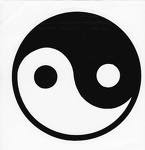The World Economic Forum have just released the results of the Global Gender Gap Report 2008.
 There are a few surprising facets to this WEF report, now in its third year, authored by Ricardo Hausmann, Director, Centre for International Development, Harvard University, Laura Tyson, Professor at University of California, Berkeley, and Saadia Zahidi from the WEF. First, what strikes me is the tremendous dynamism in the results — from one year to another a country can change by more than 30 places (as France did jumping from 51st to 15th). Secondly, the list of sponsoring companies for the research includes a number of banks, consultancies and a car company hardly known for women’s equality as well as the employment services company MANPOWER.
There are a few surprising facets to this WEF report, now in its third year, authored by Ricardo Hausmann, Director, Centre for International Development, Harvard University, Laura Tyson, Professor at University of California, Berkeley, and Saadia Zahidi from the WEF. First, what strikes me is the tremendous dynamism in the results — from one year to another a country can change by more than 30 places (as France did jumping from 51st to 15th). Secondly, the list of sponsoring companies for the research includes a number of banks, consultancies and a car company hardly known for women’s equality as well as the employment services company MANPOWER.
Those quibbles aside, the research shows that there is a “…a strong correlation between competitiveness and the gender gap scores.” And the report indicates once again the strength of the equality movement in Scandinavia, with Norway coming out on top this year ahead of its neighbouring Scandinavian countries. Here is the list of the top 10 for 2008. Noteworthy for being absent from the top 10 (I should say again) are the United Kingdom (13th) and the United States (27th, behind Cuba) which scores highest in “economic participation and opportunity.” And, fairly astonishing for being in the top 10 are the Philippines and Latvia. The report voluntarily overweights the importance of having female leadership — as a way of providing visible role models (which clearly boosted the Philippines). How much credit for France’s rise goes to Ségolène Royal (and Carla Bruni)?. A
Global Gender Gap Index
| Rank 2008 1 2 3 4 5 6 7 8 9 10 | Country
Norway | Score*
0.824 | Rank 2007 2 3 1 4 5 6 8 9 12 13 | *0 to 1 scale: 0=inequality, 1=equality | ||||||||
| Rank 2008 1 2 3 4 5 6 7 8 9 10 | Country
Norway | Score*
0.824 | Rank 2007 2 3 1 4 5 6 8 9 12 13 | ||||||||||
| *0 to 1 scale: 0=inequality, 1=equality | |||||||||||||
The report establishes the following “top line” numbers, indicating that on balance things are tending to get better, although there were nearly twice as many countries where the gap was widening in 2008 versus 2007 as opposed to the prior year. The big conclusions of the report are that the world has again shown progress in closing the gaps in economic, political and education; however, it has actually lost ground on the health gaps.

The criteria for selection are worth citing:
“The Report examines four critical areas of inequality between men and women:
- Economic participation and opportunity – outcomes on salaries, participation levels and access to high-skilled employment
- Educational attainment – outcomes on access to basic and higher level education
- Political empowerment – outcomes on representation in decision-making structures
- Health and survival – outcomes on life expectancy and sex ratio”
Meanwhile, tailing off the bottom of the list are a host of countries without need for comment: Saudi Arabia, Chad and Yemen. India (113rd) landed basically on par with Iran (116th). Japan wallowing in at 98th is a blemish…especially when you find higher up Mongolia (40th), Kyrgyz Republic (41st) and Russia (42nd). Italy lies at 68th, not exactly brilliant. Meanwhile, I thought Turkey (123rd) might have ranked higher.
Here is the writeup from the BBC and from TIME (with a good and lively analysis). If nothing else, the research and report allow for some debate and exposure to this very important issue.











It’s an interesting article and I would love to know more about the methodology. I presume that the weight of women in the Philippines comes from the women’s revenues working abroad.
Blimey. No surprise really, though, if you’ve been to Norway (which I’m sure you have).